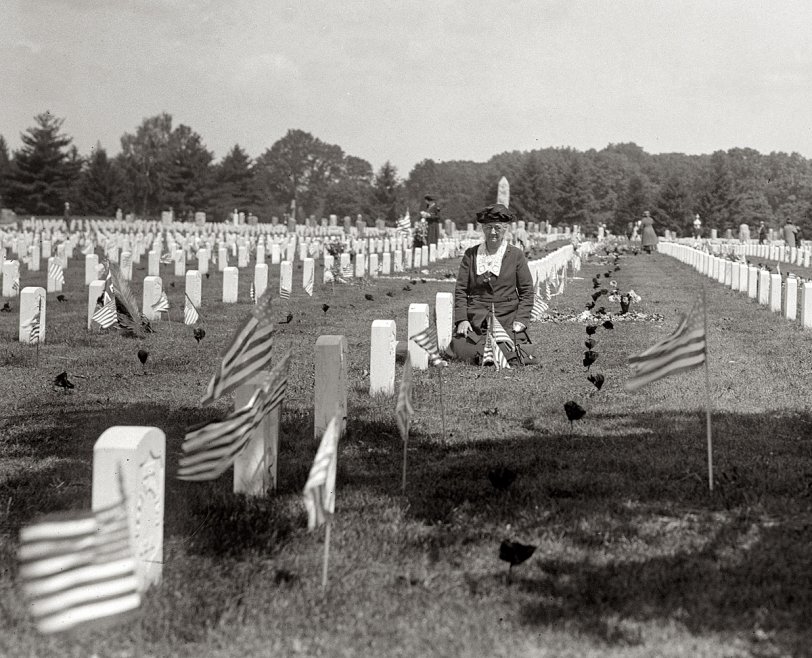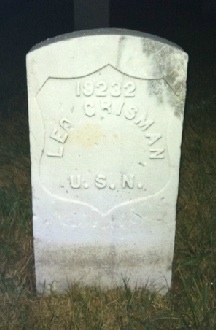


Framed or unframed, desk size to sofa size, printed by us in Arizona and Alabama since 2007. Explore now.
Shorpy is funded by you. Patreon contributors get an ad-free experience.
Learn more.

- Baldwin 62303
- Baldwin VO-1000
- Cold
- No expense spared
- Tough Guys
- Lost in Toyland
- And without gloves
- If I were a blindfolded time traveler
- Smoke Consumer Also Cooks
- Oh that stove!
- Possibly still there?
- What?!?
- $100 Reward
- Freeze Frame
- Texas Flyer wanted
- Just a Year Too Soon
- WWII -- Replacing men with women at the railroad crossing.
- Yes, Icing
- You kids drive me nuts!
- NOT An Easy Job
- I wonder
- Just add window boxes
- Icing Platform?
- Indiana Harbor Belt abides
- Freezing haze
- Corrections (for those who care)
- C&NW at Nelson
- Fallen Flags
- A dangerous job made worse
- Water Stop
Print Emporium
Arlington: 1924

May 30, 1924. "Memorial Day, Arlington National Cemetery." View full size. National Photo Company Collection glass negative, Library of Congress.
100 Years Ago - August 4, 1918
Rest in peace Leo Crisman. The picture is from the memorial service held in Wagner, SD.

Leo Crisman
Leo Crisman, the sailor buried here, enlisted with his brother Roy, and they both served on the USS Dubuque (convoy escort duty), and Roy was surely there when his brother died in August, 1918. There's much more to see here (pages 15-20).
From family photos the woman kneeling looks very much like his mother.
Behind every stone is a story waiting to be told.

The same site today
The picture below was taken in June, 2013, and is very close to the same perspective from 1924. Leo Crisman's grave has the rock on top of it. The trees have changed considerably (as they are wont to do over 89 years!) The obelisk still dominates, and the cross is there, harder to see now from this distance well shadowed by a large old oak. The Confederate Memorial, which was perfectly blocked by an evergreen tree in the 1924 photo, now is clearly visible just to the right of the obelisk. This section it seems would be much less visited now than in 1924. Time marches on, and there are not many alive who knew, or held, or were held by those that lie here.
I was curious to see the Union Jack on a grave in the 1924 picture (left side). There are five British sailors buried in this section. They were all shipmates on the HMS Warrior, a yacht loaned by Cornelius Vanderbilt to the Royal Navy in 1917-18 for World War 1. For the Royal Navy's North American Station Commander, the Warrior was his flagship, and was berthed in Washington DC. The British crewmen all died of pneumonia during the influenza pandemic in late 1918. The grave at left in the photo is that of Elmer Darrock, 23 years old from Cardiff, Wales, who died on October 19, 1918. His shipmates are just yards away.

Exact Location of Grave - Section 17, #19232
The woman is kneeling alongside the grave of Leo Crisman. Crisman was from Armour, SD, was born on April 23, 1894 (in Neb.), and had enlisted in June of 1917. He served in the Navy, with an ultimate rank of Seaman 2nd Class. He would die at age 24 of "angina ludovici" (an infection of the mouth) at a naval hospital in the Virgin Islands on August 4, 1918. He must have been buried in Arlington later that month, given the interments on nearby adjacent graces.
His mother is listed as the next of kin: Ida L. Crisman, of Armour, SD. This could very well be her, that's harder to prove.
Zcarstvnz was correct, it wasn't too hard to find the exact location. The key is of course the large obelisk directly behind the woman. A few minutes with a satellite image puts the grave in Section 17. We're looking north. The large obelisk is the grave of William Krause (+1910). Using alignments with the foreground and the larger monuments (e.g., the large cross on the left, the tall white memorial on the right), and getting the row of the obelisk right (it's two rows over, not one, and this cost no small amount of time), we can get all the lines to converge in the southern part of the section. But can we be sure of which one? Surprisingly, it is the very faint, blurry markings on the few gravestones we can see that nail down the location. The closest grave in the foreground is that of Karl Bernston, USN, #19228, +08/15/1918. Two grave sites further up is Wladyslow Mordorski (W. Mordorski on the stone), +08/14/1918. The are other small confirming details I've left out for space.
This quest was very thought-provoking. A hundred years ago is not all that long of a time.


I'm Wondering
I'm wondering if this was republished on Shorpy if the exact location at Arlington National Cemetery could be found.
With the larger audience Shorpy has today it should not be too hard. The large monument behind the lady's head and the monument to her right are great landmarks.
I wish I lived in the Virginia/D.C. area to go do this myself.
Arlington Again
Sad to know so many that rest beneath the stones
with only a blanket of grass to warm their weary bones.
Arlington
It's her half-kneeling, half-seated position — is there a word for that? — that makes the picture. If she were simply standing at her boy's grave, with head bowed, the impact would not be as great as it is, in my opinion. Or even if she were in a classic kneeling position, as if in church, it still wouldn't be the same. I interpret her posture as one of a woman weary with grief, yet trying to maintain her dignity.
Decoration Day
Memorial Day got its start in the late 1800's as Decoration Day, a day to decorate the graves of the Union dead. Most Southern states have a separate Confederate Memorial Day, too. The original day set aside was May 30th, but Congress moved to the last Monday of May in the early 1970's.
























On Shorpy:
Today’s Top 5